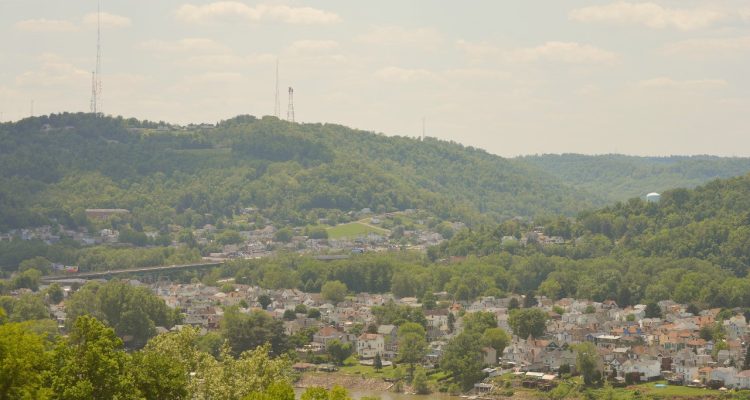By Steve Novotney
Weelunk.com
Competition?
You can bet there’s a competition between Ohio County and Belmont County.
And there should be. It’s healthy, right?
Ohio County has The Highlands and Belmont County has the mall/plaza area. There are several repeat businesses, but heavyweight rivalries do exist: Cabela’s vs. Boscov’s; Longhorn vs. Logan’s; Quaker Steak & Lube vs. Garfield’s; and the upcoming bout between main-event eateries Chipotle and Primanti Bros.
That’s not to mention the hotels and car dealerships in both retail developments.
Ding! Ding! Ding! … Are you ready?
It is a furious fight over each and every tax dollar, and the competition is inevitable, agreed Belmont County Commissioner Mark Thomas.
“Every time one of the counties installs new water and sewer lines, it’s an example of that competition,” he said. “We do those projects in Belmont County to improve the quality lifea and to pave the way for more development, and I know the objective here in Ohio County is the same.
“You can call it competition, but I can tell you that we on the Belmont County Commission do not look at it that way. We want Wheeling and Ohio County to succeed because when that happens, everyone in the valley wins. It’s a domino effect.”
The real fight does not concern local residents, though. It’s all about drawing motorists off Interstate 70. A single trip to either development reveals license plates from both West Virginia and Ohio, as well as plates from across the country.
“And that’s the best part,” Thomas said. “When people are driving through, and they stay at the local hotels, the two counties are getting tax dollars from people who don’t live here.
“When they go to Cabela’s or Boscov’s, the same thing is true. That alone lets us keep taxes to a minimum for our local residents,” Thomas added. “That’s why it’s the best part.”
Thomas has it right, and traveling tax cash is a gift initially handed to Ohio and Belmont county governments in late 1966 with the opening of Wheeling Tunnel. For decades, Ohio County – specifically the city of Wheeling – served as the economic mecca for the entire Ohio Valley, and downtown Wheeling was once the region’s retail and financial center.
Belmont County is significantly larger than Ohio County in population and square mileage, and when the Ohio Valley Mall opened in the late 1970s, several of the stores on Main and Market streets moved out and went west. Much development followed, including the Ohio Valley Plaza.
Both counties have seen an influx in development in reaction to the creation of the gas and oil industries. More than five new hotels have been constructed and opened in both counties during the past four years, and the numbers of retail and food options have grown as well. Tax collection in both counties has increased, of course, and that’s allowed for more capital improvement projects.
Belmont County has realized more of a presence in industry-related office construction, with Murray Energy, Great Plain, Rice Energy, and Chesapeake constructing facilities. The Belmont County Commission also has inked a pair of deals with Rice Energy for more than $6 million in exchange for more than 800 acres of access.
While Ohio County is void of any company headquarters, the Ohio County Commission has started collecting royalties from Chesapeake Appalachia via a $7.8 million lease agreement involving three property parcels and more than 1,200 acres. The earth under the Highlands, for example, has been harvested and has produced, “limited royalty payments,” explained Ohio County Commissioner Orphy Klempa.
“We have seen some royalty dollars come on from the deal that involves The Highlands, but from what we have learned, that dollar amount could grow in the future,” he said. “I think, at this point, no one really knows what the results are going to be because there are so many different factors involved.”
And Klempa has it right.
But, while it may be too early to predict the expected flow of funds, these extra dollars will permit several capital improvements in each county as the competition between the two continues in the coming years. What those improvements will be remains undefined.
The public should be engaged.
That is the only way commissioners from both counties can know for sure who cares enough about where they live and what they need. It is common practice for governments to stage public hearings during which such concerned citizens can be heard, and this issue should own input from those enduring the many impacts felt by us all.
You work for us, after all.



